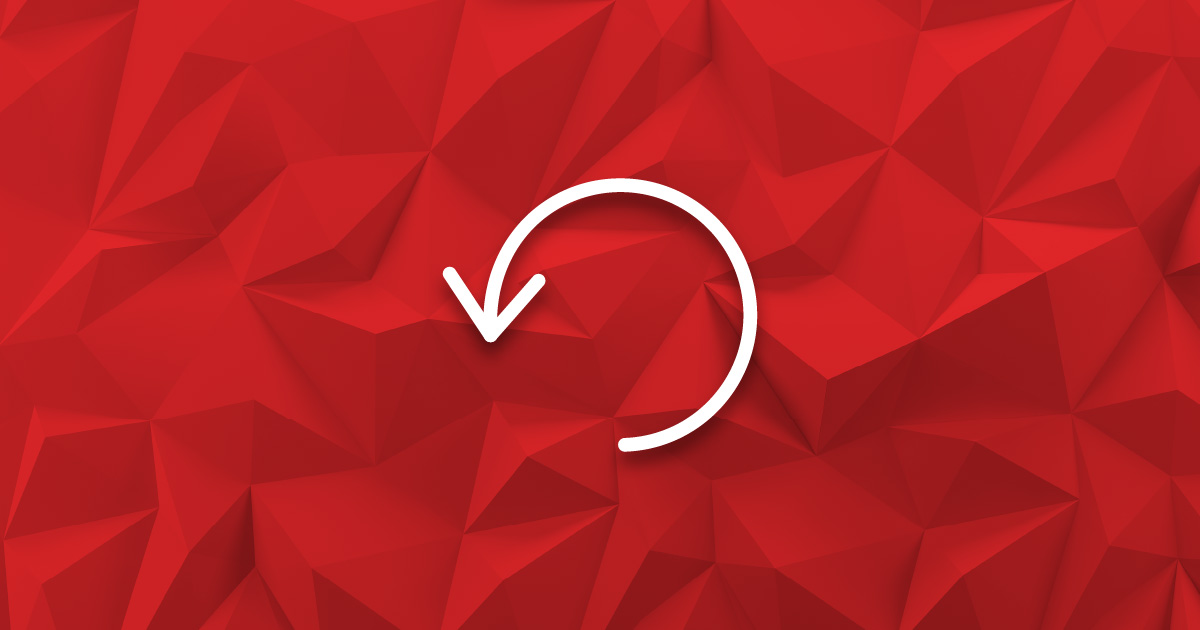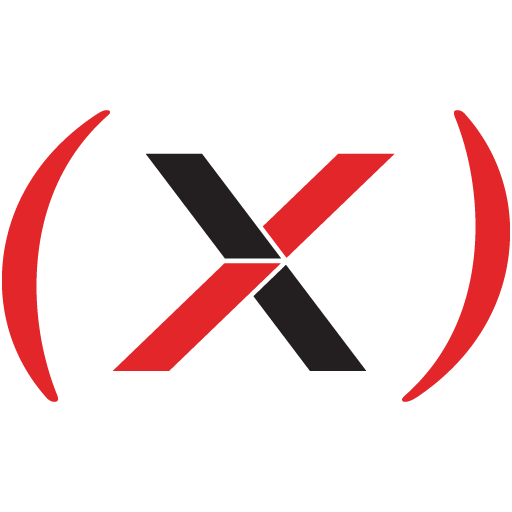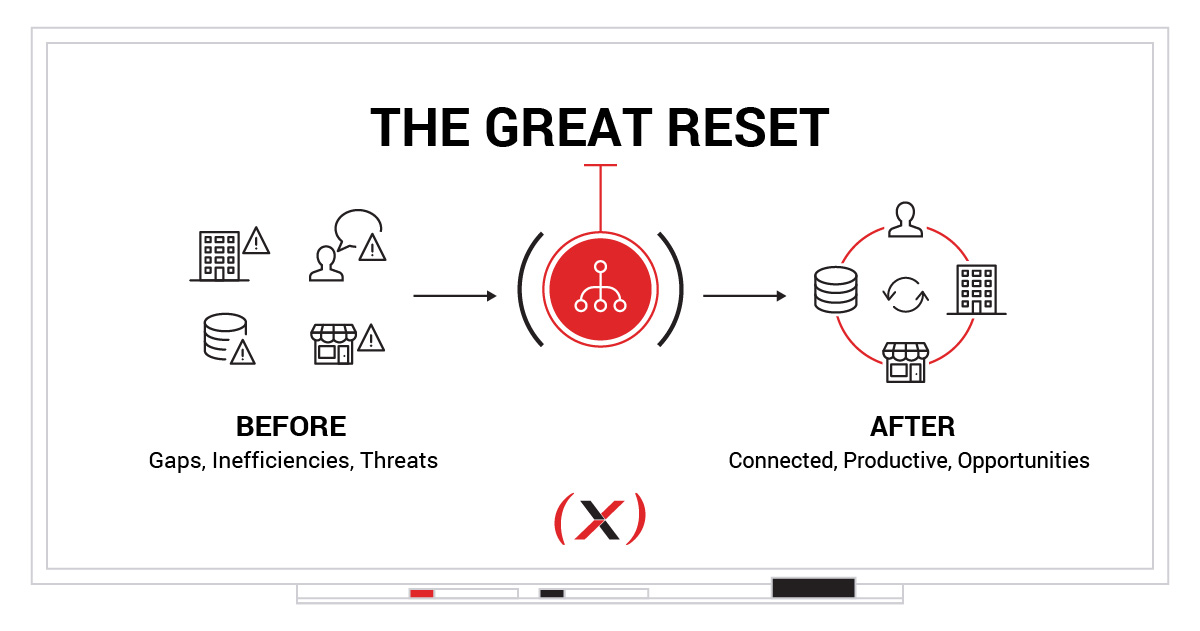
Now is the time to let strategy drive your organization. Not crisis.
By Julie Wright and Mary Randall
More than 10 years ago, we entered what was dubbed The Great Recession. What a difference a decade makes. This year was shaping up to be one of the best on record for many of the organizations that (W)right On Communications and Excelerate each work with.
Then came COVID-19.
So, we brought our team of accomplished business and communications strategists together and formed the (X) consulting team to help organizations pivot smartly in the short term and maintain operational excellence in the long term.
We believe, as does the World Economic Forum, that the global business community and governments have entered The Great Reset. It’s time to move past the concept of “unprecedented times” or the “new normal” and look instead for your “unprecedented opportunity” and, more importantly, target your “preferred new normal.”
This is your chance to hit reset and ensure your organization is set up for success.
Reaction Drove Decisions in Q1
March 2020 was a time of fast and predominantly reactive decision-making from Corporate America to Main Street America. Valued employees and entire departments were furloughed or laid off as the entire global economy took a virtual sick day that ended up lasting months. Organizational leaders had little time to take stock or make data-driven decisions as strategy took a back seat to safety. Communications teams pulled campaigns, rushed to update messaging and improvised solutions. We cannot let that happen as we move forward.Strategy Needs to Drive in The Great Reset
As you re-animate your organization, you now have a once in a generation chance to re-imagine its structure, the roles you need and the skills you are missing. To make the most of this moment, you need to be guided by strategy that is supported by good communications so you can move quickly.
With the onset of pandemic symptoms in March, organizations started cutting pay, adding voluntary layoffs and encouraging early retirements. Involuntary workforce reductions followed. The communications function struggled to keep pace which magnified feelings of uncertainty and confusion. In a sign of those times, organizations turned to Zoom to conduct mass layoffs.
This was a reaction, not a plan. And now that companies are rehiring, it’s time to ensure we take an assessment-driven approach to identify the competencies and skills needed and then determine who needs to come back, when, in what roles and whether they return to the same structure or new, more nimble structures.
What an opportunity to rethink everything from career path development to succession planning. How can you restructure functions and get people the right skills to meet current and future needs?
This is what we mean by The Great Reset – an opportunity to reset strategy, mission, structure, skills and models. It’s also an opportunity to restore your team’s confidence, rebuild and renew its sense of purpose, deepen the organization’s commitment to its mission and demonstrate its values through intentional proactive communications.
Ensuring credible, empathetic and transparent messaging in your internal communications is even more critical as temporary furloughs become permanent layoffs on the heels of painful revenue shortfalls. The same is true for messaging around your diversity and inclusion efforts and outcomes. While your resources may be strained, now is not the time to skimp on communications or phone it in.
If you continue to react rather than strategize, you may miss this moment while your competitors do not. Your people deserve this strategic and intentional approach.
Equip Your Employees with a Roadmap and the Right Vehicle
With a newly remote workforce, leaders are concerned that productivity and engagement may decline. What Gallup has found is that employee engagement reached its highest level since 2000 as of the end of May 2020. Those employees who felt “highly involved in, enthusiastic about and committed to their work and workplace” reached 38% in the company’s most recent survey.
Gallup reports a “relationship between employee engagement and performance outcomes such as profitability, productivity…” particularly during past recessions compared to non-recession periods. But today, we are not dealing with just a recession but an entirely new working environment: Work From Home (WFH).
In another more informal survey of CEOs, the findings called out concerns about how to evaluate remote workers:
“In an economy marked by 25% unemployment, it is not surprising that executives see little problem in hiring and recruiting, even if that needs to be done remotely. Evaluating colleagues, however, whom we only see occasionally on a Zoom screen, appears to be a concern for around 40% of survey participants.
Across all industries and sized companies, about 40% of respondents acknowledged that they may need new mechanisms and tools for measuring productivity and quality of work.”
A strategy-first approach based on facts and not fear can ensure corporate leaders and their remote employees are served with a new employee experience that is suitable to the new remote workforce to support its success.
This can include:
- Creating guiding principles for employees and managers to engage with one another and understand the unique reality each face working from home.
- Defining and creating intentional moments to create shared purpose and shared identity, recognizing that this remote work is not by choice, so, we must be even more mindful of its impact on relationships and motivation.
- Taking the time to reset goals and performance outcomes and coming up with a clear follow-up plan to track progress and provide support more often.
- Developing a new narrative for your organization that reframes today’s challenges to bring clarity, focus and reassurance to employees and delivering it consistently, authentically and believably across all internal platforms.
Strategy Starts with Asking for Directions
Employees might be more engaged right now because they’re happy just to have a job and not because of any renewed sense of purpose. CEOs might be concerned that productivity is at risk because they’re unsure what programs are in place to evaluate performance amongst their newly remote team members.
When we let strategy lead, we are more likely to ask the right questions. For instance:
- Is productivity rising at the expense of other important indicators like satisfaction or wellness?
- Is productivity falling because of a temporary issue with childcare or an easily corrected issue related to equipment?
- Are there new approaches to Talent Life Cycle Management from recruiting to onboarding to learning and development that the remote workforce needs?
- Are our employees Zoomed out?
- Are our customers Zoomed out? (That’s another blog post for another time!)
- What new infrastructure do we need to equip and serve our teams?
With the right data and insights, human performance and organizational structures can be in sync. Messaging and internal and/or external communications can guide employees through organizational transitions as well as bridge remote gaps and maintain a sense of connectedness and purpose , benefiting the entire organization.
Sometimes the Best Solution is a Hybrid
Taking time to refresh your organization’s Skills Assessment and Talent Lifecycle practices avoids missteps while making the most of an incredible opportunity to get it right. Reassessing and reframing your organization’s story as you go through these steps will help your workforce make sense of these changes and share a clearer vision of the future that helps them understand what they are working so hard for today. This is how your organization can develop and thrive during the Great Reset: keep strategy at the forefront of your decisions and roll out any changes with internal and external communications thoughtfully baked into the process at every step.To explore how you can deploy this hybrid approach and achieve the rapid execution needed to meet the moment, contact us at AskUs@PivotWithX.com.
Julie Wright is a Partner in (X) and Mary Randall is a Director specializing in Organizational Development and Employee Experience.



